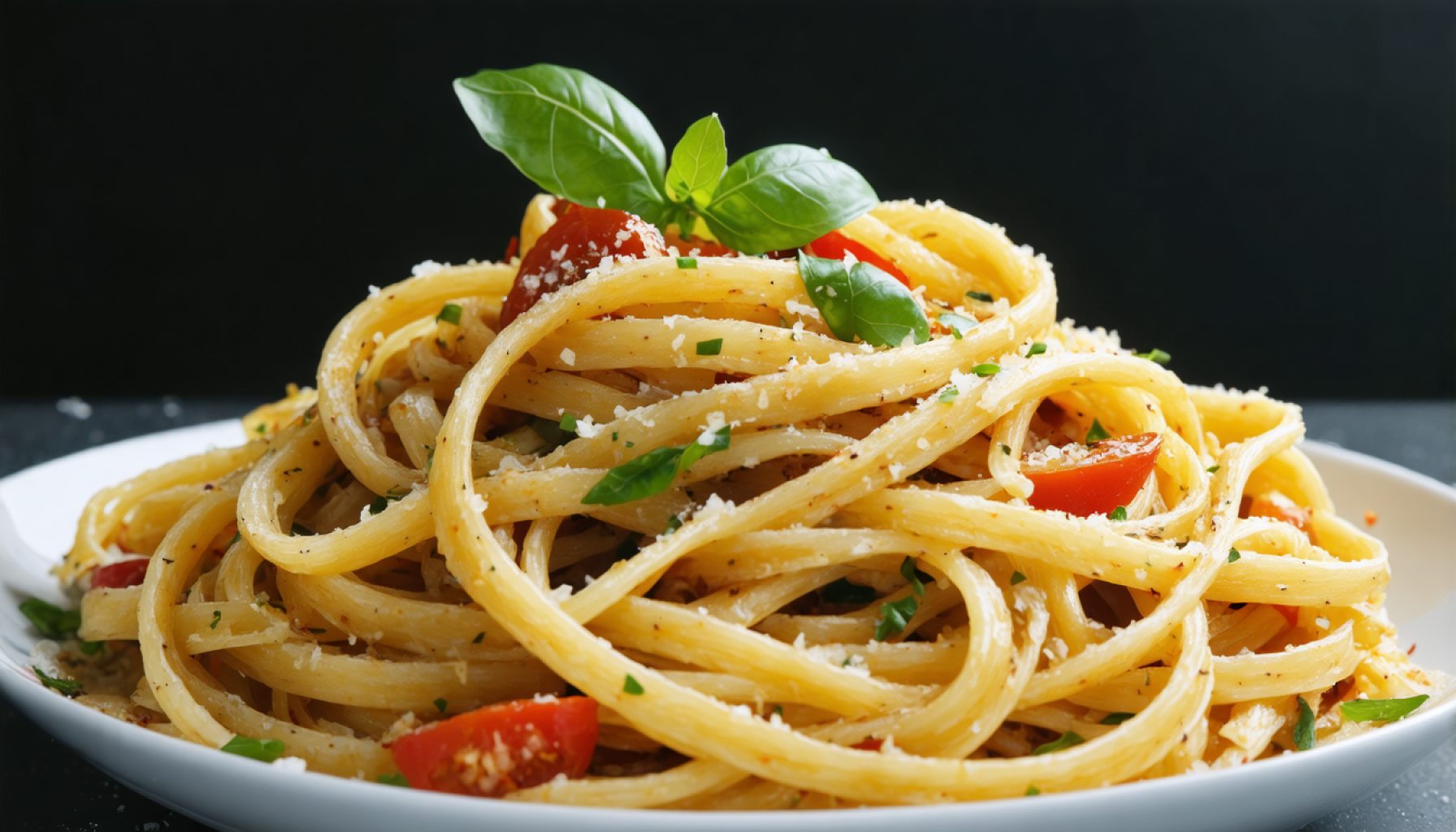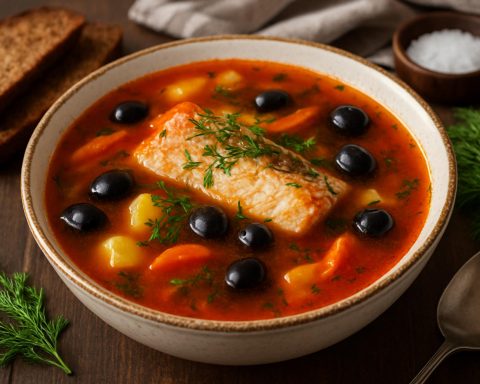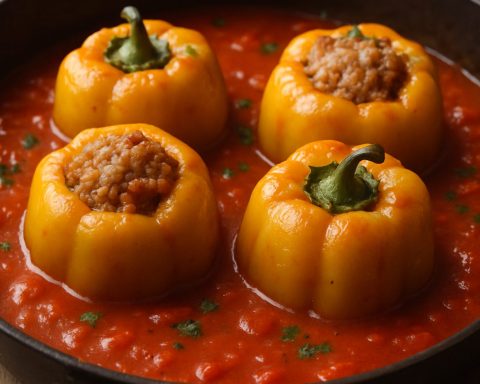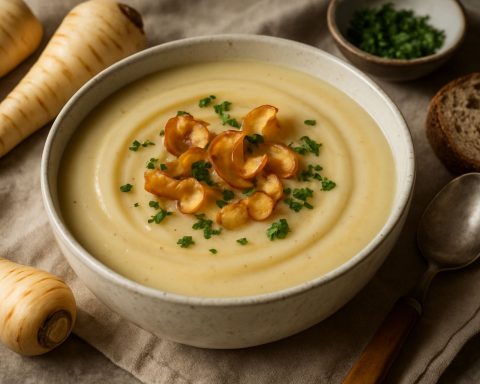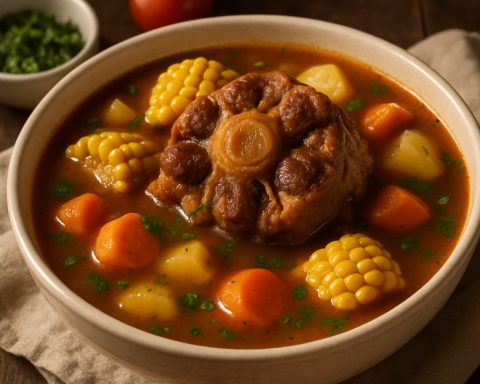Embark on a culinary adventure to the heart of Italy with the iconic “Italian Pasta,” a dish that speaks to the soul. Originating from Italy’s rustic countryside, this dish has evolved over centuries, becoming a beloved staple across the globe. Renowned for its simplicity and vibrant flavors, Italian pasta is the perfect union of wholesome ingredients and passion. Ideal for family gatherings or intimate dinners, this dish elevates any occasion with its aromatic allure and delightful textures.
Ingredients:
– 400g of your choice of pasta (spaghetti, penne, or fettuccine)
– 3 tablespoons of extra virgin olive oil
– 2 cloves of garlic, finely chopped
– 1 can (400g) of chopped tomatoes
– Salt and pepper to taste
– Fresh basil leaves for garnish
– Grated Parmesan cheese
Method:
1. Cook the Pasta: In a large pot, bring salted water to a boil. Add the pasta and cook according to package instructions until al dente. Drain and set aside.
2. Prepare the Sauce: In a skillet, heat the olive oil over medium heat. Add the chopped garlic and sauté until golden.
3. Add Tomatoes: Pour in the chopped tomatoes, stirring well. Let simmer for about 10 minutes until the sauce thickens. Season with salt and pepper.
4. Combine: Toss the cooked pasta into the skillet, mixing thoroughly with the sauce.
5. Serve and Garnish: Serve hot, adorned with fresh basil leaves and a generous sprinkle of Parmesan.
Savor the taste of Italy with each bite, and let this authentic Italian pasta dish transport you to a charming café in Rome. Buon appetito!
The Health Benefits of Italian Pasta: A Wholesome Italian Delight
Embark on a journey to Italy with an authentic and deliciously simple dish, the Italian Pasta. Known for its simplicity and vibrant flavors, Italian pasta not only delights the palate but also provides a range of health benefits thanks to its wholesome ingredients. Whether for family gatherings or intimate dinners, this dish promises to elevate any occasion, combining aromatic allure with delightful textures.
1. Pasta: The Energy Booster
Pasta is a quintessential carbohydrate, serving as an excellent energy source. It provides the body with glucose, essential for the brain and muscles. Complex carbohydrates like pasta release energy steadily, helping to maintain stable blood sugar levels. Additionally, pasta is low in sodium and cholesterol, making it a heart-healthy choice.
2. Extra Virgin Olive Oil: The Heart’s Ally
Rich in monounsaturated fats, extra virgin olive oil is known to support heart health by helping reduce the risk of heart disease. It contains antioxidants, such as vitamin E and polyphenols, which combat inflammation and oxidative stress. Olive oil is also a key component of the Mediterranean diet, synonymous with longevity and wellness.
3. Garlic: The Nutrient Powerhouse
Garlic is not only a flavorful addition but also a powerful health booster. It has been used for centuries for its medicinal properties. Rich in allicin, garlic is known for its ability to support the immune system, reduce blood pressure, and improve cholesterol levels. Its antioxidants and anti-inflammatory properties are also beneficial in maintaining overall health.
4. Tomatoes: The Lycopene-Rich Fruit
Tomatoes are an excellent source of vitamins C and K, potassium, and folate. They are rich in lycopene, an antioxidant linked to many health benefits, including a reduced risk of heart disease and cancer. Lycopene also promotes healthy skin and supports eye health. The high water content in tomatoes aids hydration and adds a fresh taste to the sauce.
5. Fresh Basil: The Aromatic Herb
Basil leaves not only provide a burst of aroma and flavor but also a wealth of health benefits. They contain essential oils like eugenol, citronellol, and linalool, which possess anti-inflammatory properties. Basil is also known to have antibacterial properties and is rich in vitamins A and K, promoting vision health and bone strength.
6. Parmesan Cheese: A Tasty Protein Source
Parmesan cheese not only enhances the flavor of the pasta but also contributes valuable nutrients. It’s an excellent source of protein and provides a good amount of calcium, supporting bone health. Parmesan is rich in vitamins B12 and A and contains probiotics that aid digestion.
In crafting your Italian pasta, each ingredient plays a crucial role in delivering not just flavor but also significant health benefits. Savor the authentic taste of Italy, knowing that every bite nourishes your body and delights your senses. Buon appetito!
Unveiling the Secrets of the Perfect Italian Pasta: Pros, Cons, and Hidden Gems
Italian pasta, an emblematic symbol of Italy’s culinary heritage, is much more than just a dish. While it is cherished worldwide for its simplicity and delightfully rich flavors, there’s more beneath its surface worth exploring. In this article, we delve into an enhanced view of Italian pasta, uncovering hidden aspects like trends, market insights, and the dish’s evolution.
Features of Authentic Italian Pasta
Italian pasta is traditionally known for its minimal yet flavorful ingredients. While the base remains consistent, there are innovative twists and new trends making waves in contemporary cuisine. Let’s dive into some of these:
– Alternative Ingredients: Apart from the classic durum wheat, modern pasta incorporates ingredients like chickpeas, lentils, and even quinoa, catering to diverse dietary preferences.
– Sauce Variations: Beyond tomato-based sauces, experimentations with pesto, carbonara, and creamy alfredo bring vibrant diversity.
Market Analysis and Trends
Italian pasta enjoys a robust market presence globally. Some trends worth noting include:
– Gluten-Free and Vegan Options: With increasing health consciousness, the demand for gluten-free and vegan pasta options is skyrocketing.
– Imported vs. Local: Authentic Italian brands dominate the market, but local interpretations and locally-sourced ingredients are challenging traditional Italian imports.
Pros and Cons of Homemade Italian Pasta
Pros:
– Customizability: Homemade pasta allows for personal customization according to taste and dietary needs.
– Freshness and Flavor: Without preservatives, fresh pasta often offers richer taste and texture.
Cons:
– Time-Consuming: Preparation can be more time-intensive than store-bought options.
– Skill Requirement: Achieving the perfect texture can require a level of culinary skill.
Innovations and Sustainability
In the realm of pasta production, sustainability has become an area of focus:
– Sustainable Farming Practices: Some Italian pasta producers are turning to regenerative agriculture to lessen environmental impact and enhance the quality of wheat.
– Biodegradable Packaging: Brands are investing in eco-friendly packaging to reduce waste.
Predictions for the Future
As a staple of comfort cuisine, Italian pasta is adaptable and ever-evolving. There’s anticipation around the rise of plant-based alternatives and continued innovation in pasta shapes and sauce pairings.
Conclusion
Italian pasta has journeyed from humble beginnings in Italy’s countryside to the tables of gourmet enthusiasts and families worldwide. As it continues to evolve, embracing new trends and sustainable methods, this beloved dish will retain its status as a timeless culinary classic.
For more culinary adventures and authentic Italian experiences, visit Italian Tourism.
Buon appetito!
